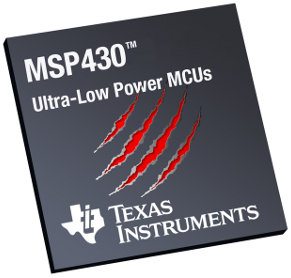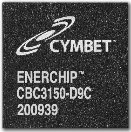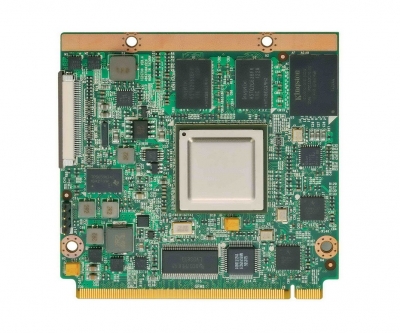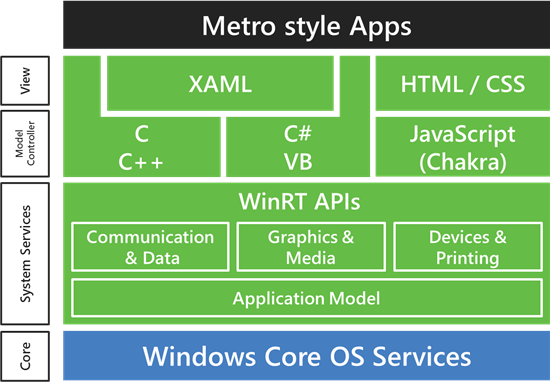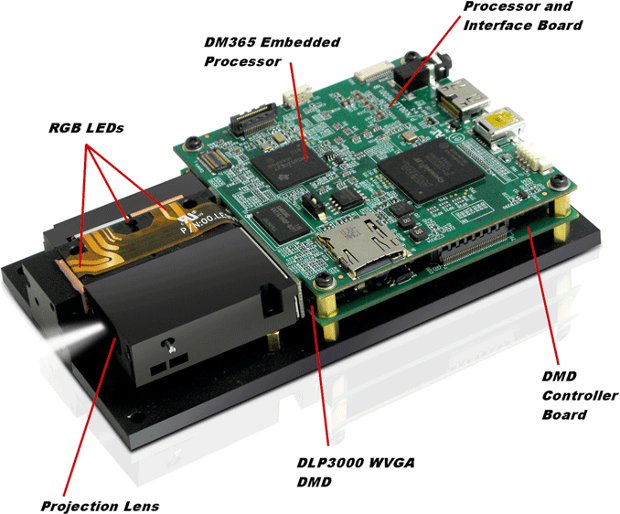Texas Instruments announced a new series of its MSP430 MCUs codenamed “Wolverine” for its aggressive power-saving technology. The company claims this ultra-low-power MSP430 microcontroller platform offers at least 50 percent less power consumption than any other micro-controller in the industry with 360 nA RTC mode and less than 100 µA/MHz active power consumption. Since typical battery powered applications spend as much as 99.9 percent of their time in standby mode, Wolverine MCUs power consumption of 360 nA in standby mode would more than double the battery life. Here are the key power savings techniques and technology using the the Wolverine MCU (MSP430FR58xx): Ultra low leakage (ULL) process technology. TI developed ULL technology that offers a 10x improvement in leakage and optimized mixed signal capabilities. Power reduction are also achieved thanks to an improved 130 nm process technology and more than 30 power-optimized analog and digital components. Unified FRAM (Ferroelectric Random […]
Texas Instruments OMAP5 Demo at MWC 2012
Charbax of armdevices.net has uploaded a very interesting video with an OMAP5430 demo and an interview at Texas Instruments booth at MWC 2012. Using the OMAP5 development kit, they demo several 3D applications, the web browser and the picture gallery and it looks extremely smooth. They discussed about the OMAP5 vs Tegra 3 benchmark, and it appears mobile web browsers are not yet optimized for more than 2 cores which could explain the performance difference somewhat. The OMAP5 currently runs at 800 MHz, but there will eventually be 2 versions: 1.7 and 2.0 GHz when the OMAP 5 AP is released. This should show a performance improvement of over 4x against the Tegra 3, although I’m sure in the meantime, Nvidia will have announced the Tegra 4 (Wayne). The OMAP 5 also offers impressive improvement in power consumption, as the SGX544 GPU cores are augmented by a dedicated 2D hardware-accelerated […]
TI Dual Core OMAP 5 Cortex A15 (800 Mhz) Twice as Fast as Nvidia Tegra 3 Quad Core Cortex A9 (1.3 Ghz)
Texas Instruments released a video showing the Web page loading time between TI OMAP 5 featuring two ARM Cortex-A15 cores at 800MHz (as well as specialized cores and accelerators), compared to a commercial device powered by a quad-core ARM Cortex-A9 processor at 1.3 GHz. They did not say it, but it’s got to be the Nvidia Tegra 3 since this is the only ARM Cortex A9 Quad-core processor with products available on the market today. In this benchmark, the devices handle 3 tasks simultaneously: Rendering 20 web pages Downloading videos Play a MP3 file The result is quite amazing, even hard to believe, with the OMAP 5 rendering the 20 pages in 95 seconds whereas it took the NVidia Tegra 3 over 200 seconds. I’m sure we’ll get an explanation of this performance difference at MWC 2012. Jean-Luc Aufranc (CNXSoft)Jean-Luc started CNX Software in 2010 as a part-time endeavor, before […]
Cymbet EnerChip Solid State Batteries and Energy Harvesting Evaluation Kits
Cymbet has developed rechargeable solid state batteries called EnerChip for Embedded Energy, Power Backup and Energy Harvesting. Applications include backing up Real Time Clocks (RTC), Micro-controllers (MCU) and SRAM devices. The company says “EnerChips are ideal for energy harvesting powered devices such as wireless sensors, medical devices, data loggers and remote location tracking equipment.” Those chipsets aim at replacing batteries such as CR2032 batteries that you can find in watches, calculators and other low power devices. The company emphasized three key benefits of such “batteries”: EnerChips are more than 10x smaller than non-rechargeable coin cell batteries EnerChips last 3x longer than conventional coin cell batteries EnerChips are less expensive to use than conventional coin cell batteries or super caps. The price starts at 20 US cents in volume quantities. You can watch the promotion video below for an overview of those chips. Cymbet shows a lot of mobile phones in their video, […]
GreenBase GQ-3874 and CG-8148 TI ARM Cortex A8 QSeven Modules
GreenBase Technology has unveiled the GQ-3874 and GQ-8148 Qseven modules based on Texas Instruments Cortex A8 processors. The GQ-3874/8148 features a PCI-e slot, SATA, four USB, four UART, dual CAN bus, ARM Cortex A8 1GHz processor, and SGX530 3D graphics engine. The GQ-3874 – Qseven Module uses the following CPU and GPU: CPU – Texas Instruments Sitara AM3874 1GHz ARM Cortex-A8 MPU GPU – SGX530 3D Graphics Engine and the GQ-8148 – Qseven Module uses the following CPU, GPU, DSP and Video hardware accelerator: CPU – Texas Instruments DaVinci DM8148 1GHz ARM Cortex-A8 MPU GPU – SGX530 3D Graphics Engine DSP – Integra C674 750MHz DSP HDVICP2 Video Encoder/Decoder hardware accelerator Both boards share the following specifications: Memory & Storage Onboard DDR3 Memory 512MB/1GB Onboard eMMC Flash 4GB/8GB Qseven 230 pin Edge Connector with: 2 x GbE 1 x PCIe 1 x SATA 1 x HDMI 4 x USB 2.0 […]
Microsoft Provides Windows 8 On ARM Technical Details
Steven Sinofsky, President of the Windows Division at Microsoft, has written a long blog post entitled “Building Windows for the ARM processor architecture” where he explains how Windows On ARM (WOA) will be deployed, the steps they took to develop it and what developers can do to program or port existing apps to Windows 8. Here are some keys and interesting points I noted: WOA and Windows 8 for x86/64 PCs will ship at the same time and the user experience should be the same for consumers on both platform. WOA PCs will be powered by Texas Instruments, Nvidia and Qualcomm processors. Microsoft will release an Unified OS Binary for WOA – That means one binary will run on all platforms (be it TI, Nvidia or Qualcomm). That seems impressive, and something Linux is not capable of, although much work is done on that and a unified linux kernel should […]
Texas Instruments Pico Projector Module: DLP LightCrafter
Texas Instruments announced the DLP LightCrafter, a Pico Projector evaluation module. This module is powered by an ARM9 TMS320DM365 processor @ 300 Mhz (with 1080p video co-processor) running Embedded Linux. It features a 20-lumen RGB LED light engine and projector, as well as TI DLP 0.3 WVGA chipset. The DLP LightCrafter EVM is intended to bring DLP (digital light processing) devices faster to market and targets the industrial, medical, security and scientific instrument markets with devices such as pico projectors, 3D fingerprint scanners and 3D printers. The DLP LightCrafter incorporates TI DLP3000-C300REF reference design with includes the 0.3 WVGA chipset, TMS320DM365 embedded processor and MSP430 micro-controller. Here are the key features of the DLP LightCrafter: 20 lumen light output WVGA resolution (608×684 native) Up to 4kHz binary pattern rate Configurable I/O trigger DM365 embedded processor (ARM926E-JS) 128MB NAND flash memory USB, Mini HDMI, UART interfaces Dimensions: 117mm x 65mm […]
The Past, Present and Future of Ubuntu for ARM
David Mandala of Canonical talked at Linux.Conf.Au on 18th of January 2012 about Ubuntu for ARM and the move from netbook to server support. You can read my notes below, or jump at the end of this post to watch the presentation. The Past 2008: Ubuntu decides to only support ARMv7 architecture vs. Debian that supports ARMv4 and above. 2009: Ubuntu release for Freescale i.MX51 (ARMv5 built), and then Marvell ARMAVA with ARMv6 and VFP (ARM floating point unit) support. 2010: April (10.04) The first ARMv7 release for OMAP3 (Beagleboard) with VFP, Thunb2, NEON and SMP for ARM and first netbook edition October (10.10) Pandabord (OMAP4) release with initial device tree support for ARM. Starts work with Linaro. 2011: 11.04 (5th release) – Supports OMAP3 and OMAP4 only. The netbook edition is using Qt, further improvement to device tree, further work with linaro and on the way to the Unified […]


